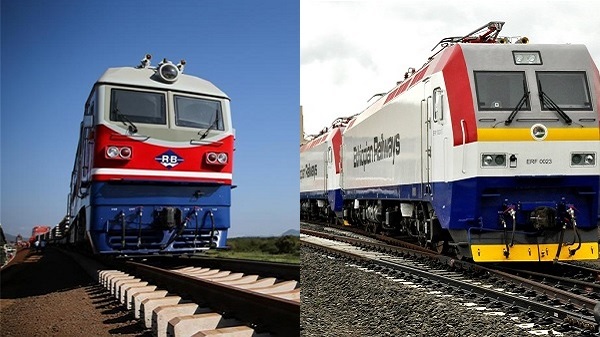
Kenya inaugurated a 290-mile-long railway which connects the port city of Mombasa and the capital, Nairobi, which was built and largely financed China. How does this new railway compare with the Ethio-Djibouti railway which connects Ethiopia’s capital, Addis Ababa, to the Port of Djibouti?
By Paul Bakibinga & Damian Zane (BBC Africa Live)
The first major new railway line in Kenya for more than a century, running between the capital, Nairobi, and the coastal city of Mombasa, faces an immediate challenge of justifying its relatively high cost, reports the BBC’s Nancy Kacungira.
This is Kenya’s biggest infrastructure investment since independence in 1963 from the Great Britain.
At $5.6m per kilometer for the track alone, Kenya’s line cost close to three times the international standard and four times the original estimate.
Cost comparisons have been made between this line and Ethiopia’s 756km (470 mi) Addis Ababa-Djibouti line launched last year (October 2016).
Both are Standard Gauge Railway (SGR) projects financed by Chinese loans, costing $3.4 billion (£2.6 billion) for Ethiopia and $3.2 billion (£2.5 billion) for Kenya.
Ethiopia’s line is more than 250km longer and is electrified, which is typically more expensive; trains running on Kenya’s line will be diesel-powered.
The Kenyan government has said the reasons for this high cost include the terrain that required many bridges and tunnels, land compensation and a need for specifications that would handle greater cargo volumes than Ethiopia’s line.
Therefore, it says, the Mombasa-Nairobi Railway and the Ethio-Djibouti Railway are not directly comparable.
Source: BBC Africa Live
——
Other stories:
- Towards Making Ethiopia Africa’s Investment Hub
- East Africa to Track Trucks from Mombasa Port to Stop Theft
- Ethiopia–Djibouti Railway: A First Step to Trans-Africa Railway?
- FOCAC: Helping Ethiopia onto China’s Express Train of Development
- VIDEO: Commercial Rail Begins Service from Addis Ababa to Dire Dawa
